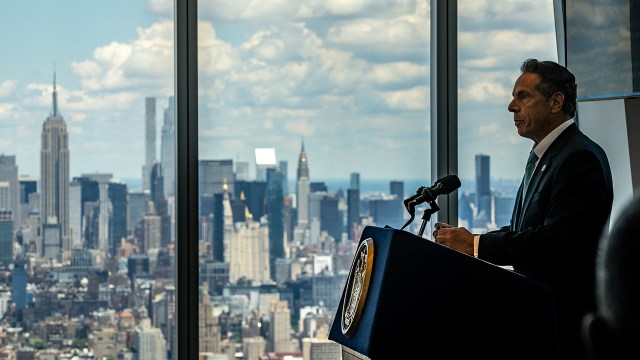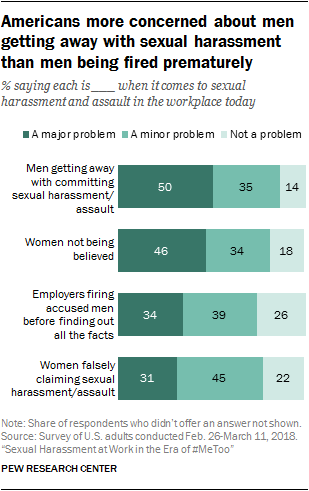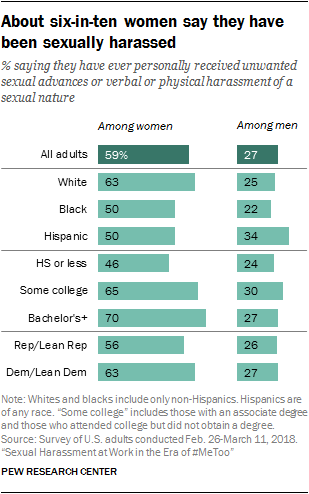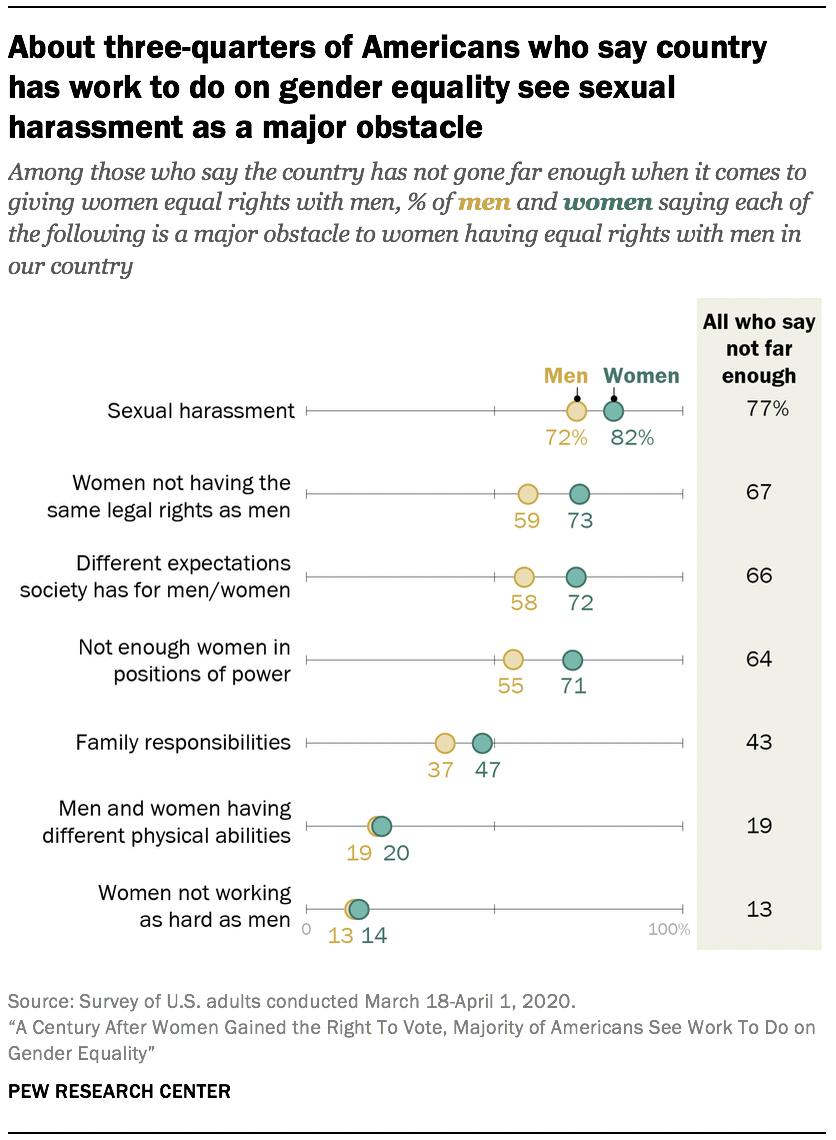
This week, a report from the New York state attorney general alleged that Gov. Andrew Cuomo sexually harassed 11 women, including current and former state employees, and violated state and federal law. The report’s release leaves Cuomo’s political future uncertain and is prompting a renewed conversation about workplace harassment and abuse in the United States.
In early 2018, Pew Research Center conducted a survey on workplace sexual harassment and assault following the start of the #MeToo movement, when allegations against prominent men in entertainment, politics, the media and other industries sparked increased attention to those issues. Here are relevant findings from that report, along with results of a more recent Center survey about gender equality more broadly.

- In the 2018 survey, about half of U.S. adults said that when it came to sexual harassment and assault in the workplace, men getting away with it (50%) and female accusers not being believed (46%) were major problems. There were notable gender gaps on responses to these questions. For instance, 52% of women said that women not being believed was a major problem, compared with 39% of men. And while 55% of women said that men getting away with sexual harassment was a major problem, 44% of men said the same.
- In the same survey, many Americans said the increased focus on sexual harassment and assault posed new challenges for men when navigating their interactions with women at work. About half of adults (51%) said the increased focus on these issues had made it harder for men to know how to interact with women in the workplace. Only 12% said it had made it easier for men, and 36% said it hadn’t made much difference.

- The 2018 survey also found that 59% of women and 27% of men had personally received unwanted sexual advances or verbal or physical harassment of a sexual nature, whether in or outside of a work context. Among women who said they had been sexually harassed, more than half (55%) said it had happened both in and outside of work settings. Overall, 69% of women who said they had experienced sexual harassment said it had happened in a professional or work setting.
- About a third of Americans said in the same survey that employers firing accused men before finding out all the facts (34%) and women making false accusations (31%) were major problems in the workplace.

- In a separate 2020 survey, a majority of U.S. adults (57%) said the country hadn’t gone far enough when it came to giving women equal rights with men, even as 65% said there had been progress in the last decade. Among those who said the country still had work to do in achieving gender equality, 77% pointed to sexual harassment as a major obstacle to women having equal rights with men. Women were more likely than men (82% vs. 72%) to see this as a major obstacle.
